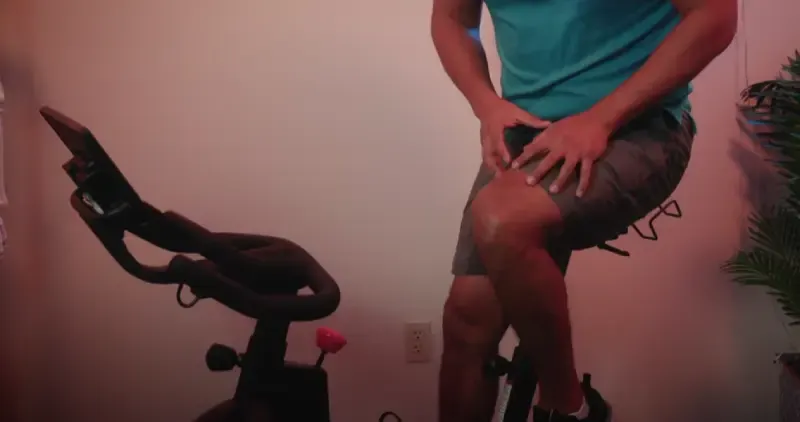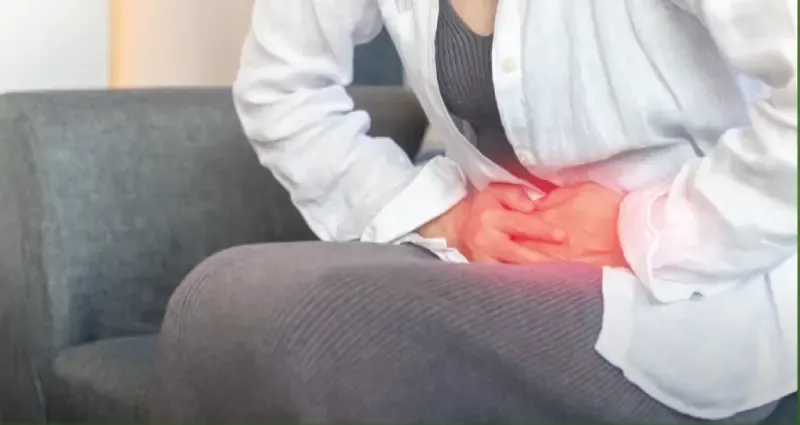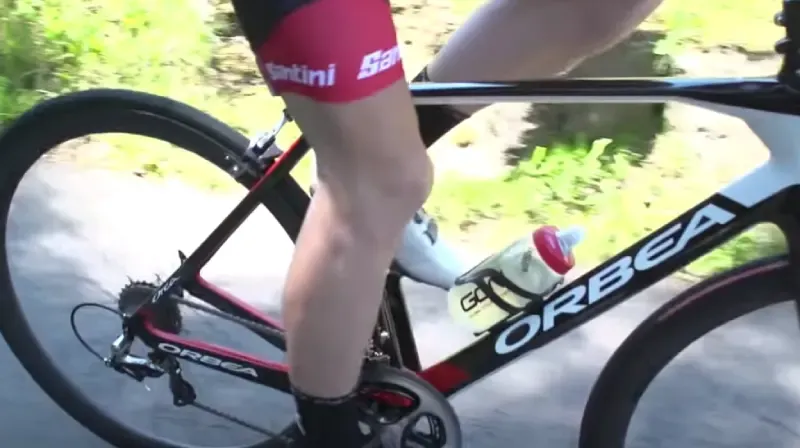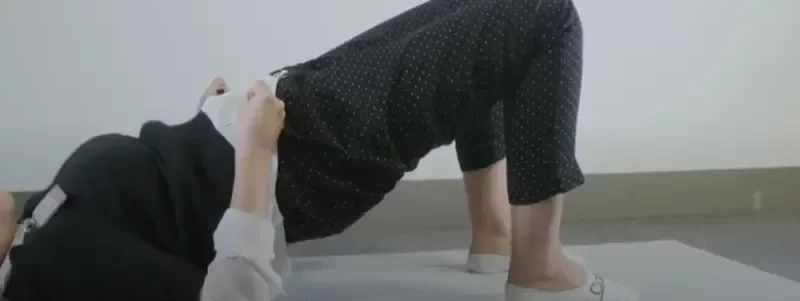Kidney stone pain can start in the lower back or abdomen and spread to the groin area and legs. It can be intense and worsen with physical movements like riding a bike.
A kidney stone can cause referred pain by irritating nearby nerves in the urinary tract. This pain can be felt as discomfort or aching in the legs, especially during physical activities such as cycling.
Yes, kidney stones can cause leg pain while cycling, although it’s not a common symptom. The pain can be severe, mainly when the stone is close to passing if you experience leg pain while cycling, consult a healthcare professional to rule out any underlying issues.
This blog post will explain the factors contributing to kidney stone-induced leg pain. In contrast, cycling, the connection kidney stones have with leg pain, symptoms of kidney stones and leg pain in cyclists, and managing kidney stone-related leg pain while cycling.
Can Kidney Stones Cause Leg Pain While Cycling: 5 Triggers
Regarding kidney stones potentially causing leg pain while cycling, several factors play a pivotal role in understanding this intricate connection. Let’s delve into these essential factors that shed light on the interplay between kidney stones and leg discomfort during cycling:
The Relationship Between Kidney Stones And Leg Pain
Kidney stone-related leg pain can be indirect. Referred pain caused by kidney stones is often attributed to kidney stones. Stones move through the urinary tract and hurt your lower back, stomach, and groin.
Several nerves in the body interconnect to cause pain in other areas, including the legs. Cycling may cause leg pain due to kidney stones:
Onset of Leg Pain: A Warning Signal
When cyclists experience leg pain while indulging in their passion for cycling, it can serve as a poignant warning signal of underlying health issues, including kidney stones. The sudden discomfort in the legs, especially when accompanied by other symptoms, causes a closer examination of potential factors contributing to this distressing sensation.
Mystery of Kidney Stones
Kidney stones, crystalline formations that develop in the kidneys, can trigger symptoms beyond traditional urinary complications. For cyclists, leg pain caused by kidney stones can be profound, disrupting the fluidity of movement and diminishing the enjoyment derived from cycling endeavors.
Referred Pain
Kidney stone pain doesn’t always remain localized to the lower back or abdomen because of the shared nerve pathways. It can radiate into the legs. This referred pain may be felt as a dull ache, tingling, or discomfort in the thighs, knees, or calves. Cycling, as a physical activity, can exacerbate this leg pain because of the repetitive motion and pressure on the legs.
Muscle Tension and Spasm

The discomfort caused by kidney stones can lead to muscle tension and spasms around the legs and back. These spasms can contribute to leg pain, particularly during activities like cycling, where the muscles are engaged and under strain.
Posture and Movement
Cycling involves specific postures and movements that can exacerbate pain or discomfort. Kidney stones may cause people to adjust their posture while cycling to ease pain, which can strain specific muscles and lead to leg pain.
6 Symptomatic Insights Into Kidney Stones and Cycling Leg Pain
Embarking on a cycling journey can be a liberating experience. Still, kidney stones may lurk beneath the surface when unexpected leg pain disrupts rhythm. Leg discomfort during cycling from kidney stones can be symptomatic of various symptoms. Here are some kidney stone symptoms through the lens of cyclists navigating the open road.
Severe Pain on Either Side of Your Lower Back
The emergence of severe, unrelenting pain on either side of the lower back is a glaring indicator of potential kidney stone involvement. For cyclists encountering this intense discomfort while pedaling through scenic routes, recognizing the significance of such localized pain can lead to timely intervention and management of kidney stone-related leg pain.
More Vague Pain or Lingering Stomach Ache
Beyond the acute manifestations, kidney stones can manifest as more ambiguous pain or a persistent stomach ache that defies conventional remedies. Cyclists grappling with this lingering discomfort during cycling should consider the possibility of underlying kidney stones, emphasizing the importance of differentiating between routine fatigue and potential medical concerns.
Blood in the Urine: A Distinctive Warning Sign
The presence of blood in the urine, a symptom often associated with kidney stones, warrants immediate attention from cyclists. This alarming occurrence, especially when paired with leg pain during cycling, serves as a distinctive warning sign, causing thorough evaluation and proactive measures to reduce kidney stones’ impact on overall well-being.
Nausea or Vomiting: Unwelcome Companions on the Road
Cyclists experiencing nausea or vomiting amidst their cycling endeavors should not dismiss these symptoms as mere inconveniences. These manifestations, possibly linked to kidney stones, signify underlying physiological distress that requires professional assessment to address the root cause and alleviate potential leg pain during cycling.
Fever and Chills: Harbingers of Systemic Disruption
The onset of fever and chills amidst a cycling excursion can signal systemic disruption, potentially attributed to kidney stone complications. Recognizing these systemic indicators is crucial for cyclists trying to prevent kidney stone-related leg pain from impeding their cycling pursuits.
Bad-Smelling Urine or Cloudy Urine: An Ominous Cue

Changes in urine characteristics, such as foul odor or cloudiness, can serve as ominous cues hinting at kidney stone involvement. Cyclists observing these alterations in urinary appearance should approach them vigilantly, considering the broader implications for their cycling performance and overall health.
4 Different Types of Kidney Stones That Can Cause Leg Pain During Cycling
Ureter stones are formed when crystals in your urine join to create clumps. These stones develop in the kidneys and then travel into the ureter. It’s important to note that not all ureter stones are composed of the same crystals. They can be formed from various types of crystals, including:
Calcium Stones
Most kidney stones are calcium stones, comprising about 80% of cases. These stones form when calcium combines with other urine substances like oxalate or phosphate. Factors such as dehydration, a high intake of foods high in oxalate, and medical conditions may increase the risk of calcium stone formation.
While calcium stones typically cause pain under the ribs or in the abdomen, they can also lead to referred pain in the legs, including discomfort while cycling.
Uric Acid Stones
Stones formed from uric acid buildup in the urine are called uric acid stones. This can occur because of various factors, including a diet high in purines, dehydration, and certain medicalconditions such as gout.
Calcium stones are more common than uric acid stones but can cause significant discomfort. The pain associated with uric acid stones may radiate to the legs, making cycling uncomfortable or even intolerable for some people.
Struvite Stones
Struvite stones, referred to as infection stones, develop in reaction to urinary tract infections (UTIs) triggered by specific bacteria. If left untreated, these stones can rapidly enlarge. They are predominantly found in women and are frequently linked with recurring UTIs.
While the primary symptoms of struvite stones include urinary issues such as frequent urination and pain during urination, they can also cause referred pain in the legs, potentially affecting cycling performance.
Cystine Stones
Cystine stones are rare and form because of a genetic disorder called cystinuria, which results in the kidneys excreting too many amino acids, including cystine, into the urine. Because cystine is not very soluble in urine, it can accumulate and form crystals, eventually leading to stone formation.
People with cystinuria may experience recurrent kidney stones at a young age. While the primary symptoms of cystine stones include severe pain in the back and sides, the discomfort extends to the lower abdomen and legs, affecting activities like cycling.
Optimal Exercise Strategies for Managing Kidney Stones and Leg Pain During Cycling
The challenges posed by kidney stones resulting from leg pain during cycling require a strategic approach. To ensure a safe and fulfilling cycling experience while dealing with kidney stones, here are some tips:
- Modify Cycling Intensity: To accommodate kidney stone pain, lengthen and intensify cycling sessions. Opt for a more moderate pace and listen to your body to avoid exacerbating leg pain.
- Focus on Proper Hydration: Adequate hydration is crucial for patients with kidney stones. Ensure you drink plenty of water before, during, and after your cycle to help prevent the formation of new rocks and ease leg pain associated with existing ones.
- Incorporate Low-affected Activities: Besides cycling, consider incorporating low-impact exercises like swimming, walking, or gentle yoga into your fitness routine. These activities can provide a reprieve for your legs while still promoting overall fitness and well-being.
- Stretching and Strengthening Exercises: Engage in targeted stretching and strengthening exercises to enhance flexibility and muscle support around the affected areas. Focus on stretching your lower back, hips, thighs, and calves to ease tension and reduce leg pain during cycling.
- Warm-Up and Cool Down: Prioritize a thorough warm-up routine before cycling to prepare your muscles and joints for exertion. Following your ride, engage in a cool-down session to promote recovery and prevent stiffness that could worsen leg pain.
- Listen to Your Body: Closely to your body’s signals while cycling with kidney stones. If you experience increased discomfort or persistent leg pain, consider taking breaks, adjusting your position on the bike, or discontinuing the activity if necessary.
- Monitor Symptoms: Monitor leg pain and kidney stones during and after your cycling sessions. If you notice worsening pain or recent developments, communicate promptly with your healthcare provider for further evaluation and management.
- Dietary Modifications: Avoid foods high in oxalates, such as spinach, nuts, and chocolate, which can contribute to calcium oxalate kidney stones. Limit intake of sodium and animal proteins, as these can increase the risk of certain types of kidney stones. Eat fruits, vegetables, and whole grains instead.
- Monitor Electrolyte Levels: Imbalances in electrolytes, such as calcium, sodium, and potassium, can contribute to kidney stone formation. Avoid excessive consumption of sports drinks or supplements containing high levels of electrolytes.
Benefits of Yoga for Kidney Stone Management
Combining physical and mental well-being, yoga can serve as a valuable exercise modality for people grappling with kidney stones. Here’s how incorporating yoga into your routine can support kidney stone management and promote overall health:
Enhanced Flexibility and Muscle Support

- Yoga poses focus on strengthening and stretching various muscles, including those in the lower back, hips, and legs. Improved flexibility and muscle support can help ease tension and discomfort associated with leg pain and kidney stones caused by activities like cycling.
Promotion of Fluid Movement
- The gentle, flowing movements in yoga sequences promote fluid flow in the body, potentially aiding in passing kidney stones. Certain yoga poses may facilitate the expulsion of stones by promoting fluid movement through the urinary system, easing leg pain and discomfort.
Stress Reduction and Relaxation
- Stress exacerbates kidney stone symptoms and contributes to muscle tension. Breathing techniques and mindfulness practices in yoga promote relaxation, reduce stress levels, and create a calming effect on the body. By managing stress through yoga, you can mitigate the impact of kidney stones on leg pain during physical activities like cycling.
Improved Circulation and Detoxification
- Certain yoga poses and sequences enhance blood circulation and stimulate the lymphatic system, supporting the body’s natural detoxification processes. Because of increased circulation, toxins and waste products are removed from the body, potentially reducing the likelihood of kidney stone formation and promoting overall kidney health.
Balance and Alignment
- Yoga emphasizes balance, alignment, and posture, which can benefit cyclists with kidney stones experiencing leg pain while cycling. Enhancing body awareness and symmetry through yoga can improve overall stability and alignment, reducing strain on muscles and joints during physical activity.
Conclusion
Cycling can be exhilarating, but an underlying health issue like kidney stones may bring unexpected challenges. Not usually tied together, cycling and kidney stones can interlink when referred pain comes into play, potentially leading to leg discomfort during your ride.
However, it’s essential to remember that these instances are uncommon, and leg pain during cycling could stem equally from other factors. If you are experiencing leg pain, a strategic approach encompassing exercise modifications, hydration, dietary changes, and yoga can be beneficial.
While the connection kidney stones to leg pain experienced while cycling may seem enigmatic, understanding the relationship can help you better manage the discomfort. Consult a healthcare professional if symptoms persist.
FAQs
How Do Kidney Stones Lead To Leg Pain During Cycling?
Stones moving through the urinary tract can irritate nearby nerves, causing leg pain. Kidney stone pain can also trigger muscle tension and spasms that hurt your legs when you cycle.
Which Exercise Is Good For Kidney Stones?
Low-intensity exercises such as walking, jogging, and cycling are good for kidney stones. They can help increase blood circulation to the kidneys, keeping them healthy, and aid in passing the stone through the urinary tract more easily.
Is It OK to Exercise With Kidney Stones?
It’s generally okay to exercise with kidney stones if your pain is under control. Listen to your body and halt any activity if you experience unusual sensations or pain in the abdomen or lower back. Always consult your healthcare provider for personalized advice.
Do You Get Kidney Pain From Exercising?
Exercising excessively can lead to a condition called rhabdomyolysis, where muscle breakdown products can cause kidney damage. Kidney pain can be a symptom of rhabdomyolysis, indicating potential kidney issues from intense exercise. If you experience persistent or severe kidney pain after exercising, seek medical attention promptly.
How Do Kidney Stones and Hip Pain Relate?
Kidney stones can cause severe pain known as renal colic, lasting 20 to 60 minutes. The pain can be felt in the flank or lower abdomen and may radiate towards the groin. Treatment is necessary as the pain does not disappear completely without intervention.


